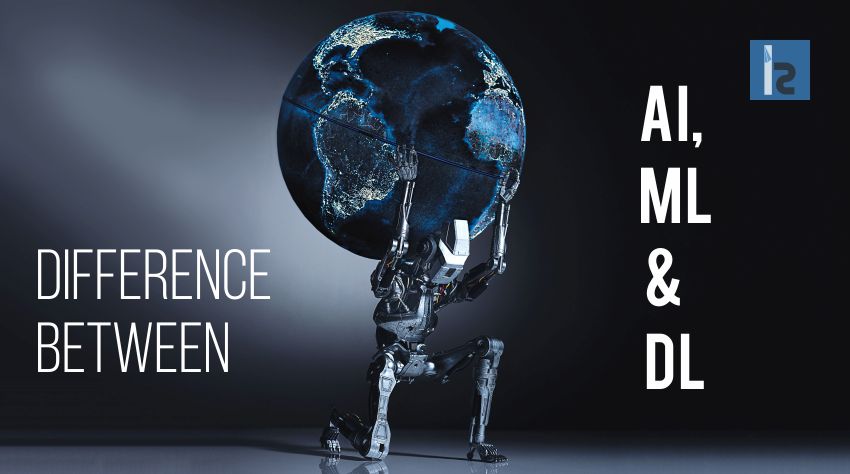In human civilization, AI has proven to be the most brilliant invention of the human brain. Though we all had imagined about such a thing or read about it in fiction novels or movies, the people in the 1956 Dartmouth Conference turned it into reality. Today, nothing is impossible when it comes to implementation of Artificial Intelligence. To get an insight about AI, let us understand the interlinking of the three terms, Artificial Intelligence, Machine Learning and Deep Learning. Even with the close association in the field of super computers, these terms comprehend different meaning in the world of AI.
Artificial Intelligence
 Artificial intelligence is human intelligence exhibited by machines. The main motive of the pioneers of Artificial intelligence was to possess the characteristics of the human brain in the computers. They think like us, sense like us, respond like us. This can be put altogether in the General AI category. The concept of AI at the root is that the machines should be clever and insightful like human beings.
Artificial intelligence is human intelligence exhibited by machines. The main motive of the pioneers of Artificial intelligence was to possess the characteristics of the human brain in the computers. They think like us, sense like us, respond like us. This can be put altogether in the General AI category. The concept of AI at the root is that the machines should be clever and insightful like human beings.
The deeper and more intense segment is Narrow AI. Examples of narrow AI are finger print recognition, face detection and other apps such as Twitter, Pinterest and Instagram. But the question is how these machines are intelligent as humans? Where do they get it from? This gets us to the next section, Machine Learning.
Machine Learning
 Machine Learning basically resolves data using algorithms; learn from the data and get a solution. The inventors of AI have developed codes that they used in the smart computers to parse huge amounts of input data. In this process, the machines are trained to perform a particular set of tasks by processing as much data as possible.
Machine Learning basically resolves data using algorithms; learn from the data and get a solution. The inventors of AI have developed codes that they used in the smart computers to parse huge amounts of input data. In this process, the machines are trained to perform a particular set of tasks by processing as much data as possible.
The most brilliant innovation in the history of Machine Learning applications is electronic vision. To detect sign boards, shapes and sizes of objects are among the few distinct abilities of smart systems. The system would use the hand coded classifiers to develop algorithms, learn from the processed data and perform accordingly.
But at times of blurred vision due to unfavorable weather conditions or any other reason, the machine intelligence didn’t prove to be a very reliable tool. Hence experts designed more apt, reliable and thorough algorithms which bring us to the next bid.
Deep Learning
 Resemblance to the human brain anatomy made the new version of AI more accurate than the previous versions of itself. Neural networks in a human brain are interconnections between the neurons. They are capable of connecting with any other neuron that lies in the closest vicinity. However the artificial neural networks are bound to their layer, they cannot make interlayer connections. So any input is first analyzed by one layer then passes on to the next layer, and in the end the final output is the combined decision from all the stages of analyses.
Resemblance to the human brain anatomy made the new version of AI more accurate than the previous versions of itself. Neural networks in a human brain are interconnections between the neurons. They are capable of connecting with any other neuron that lies in the closest vicinity. However the artificial neural networks are bound to their layer, they cannot make interlayer connections. So any input is first analyzed by one layer then passes on to the next layer, and in the end the final output is the combined decision from all the stages of analyses.
So to acquire precision, all that the AI system needs is training. To identify a particular image, it needs to go through thousands of images similar to that. It needs to process that data through each neuron layer again and again until the weighing of neurons is tuned precisely. So when your computer or smartphone detects your face it has trained itself about how your face looks precisely. Same applies to thumb prints and retina detection.
Future of AI
In the era of Automated Machine Systems, AI is the backbone of all the major industries. Self-driving Cars, Healthcare Industry, Film Industry, Food Industry and the Gaming World, all have unique forms of AI applications. With the help of deep learning, AI is bound to carve a significant path in the world of science and come up with amazing things in the future.
– Namita Patil
| Click Here For More News and Blog |


